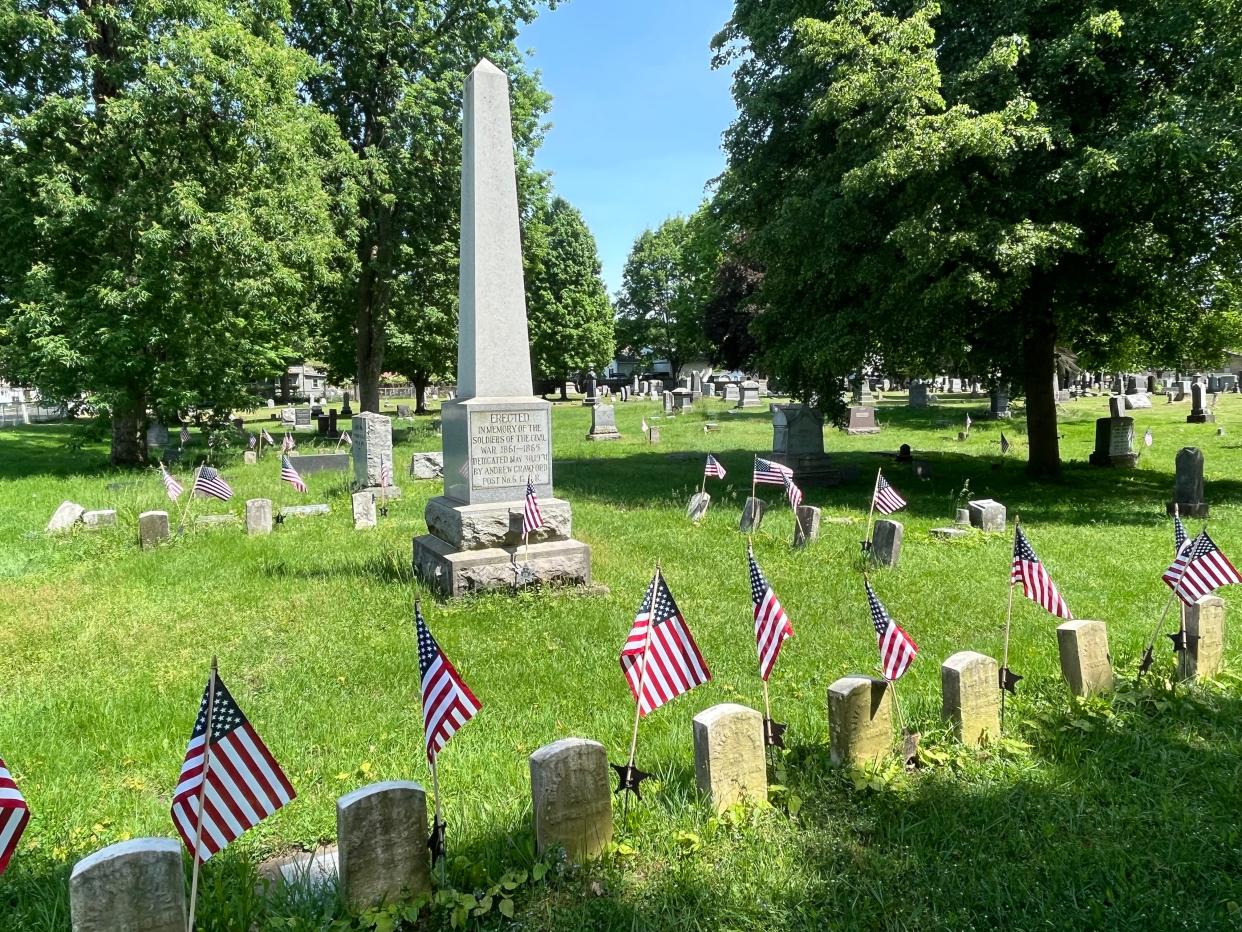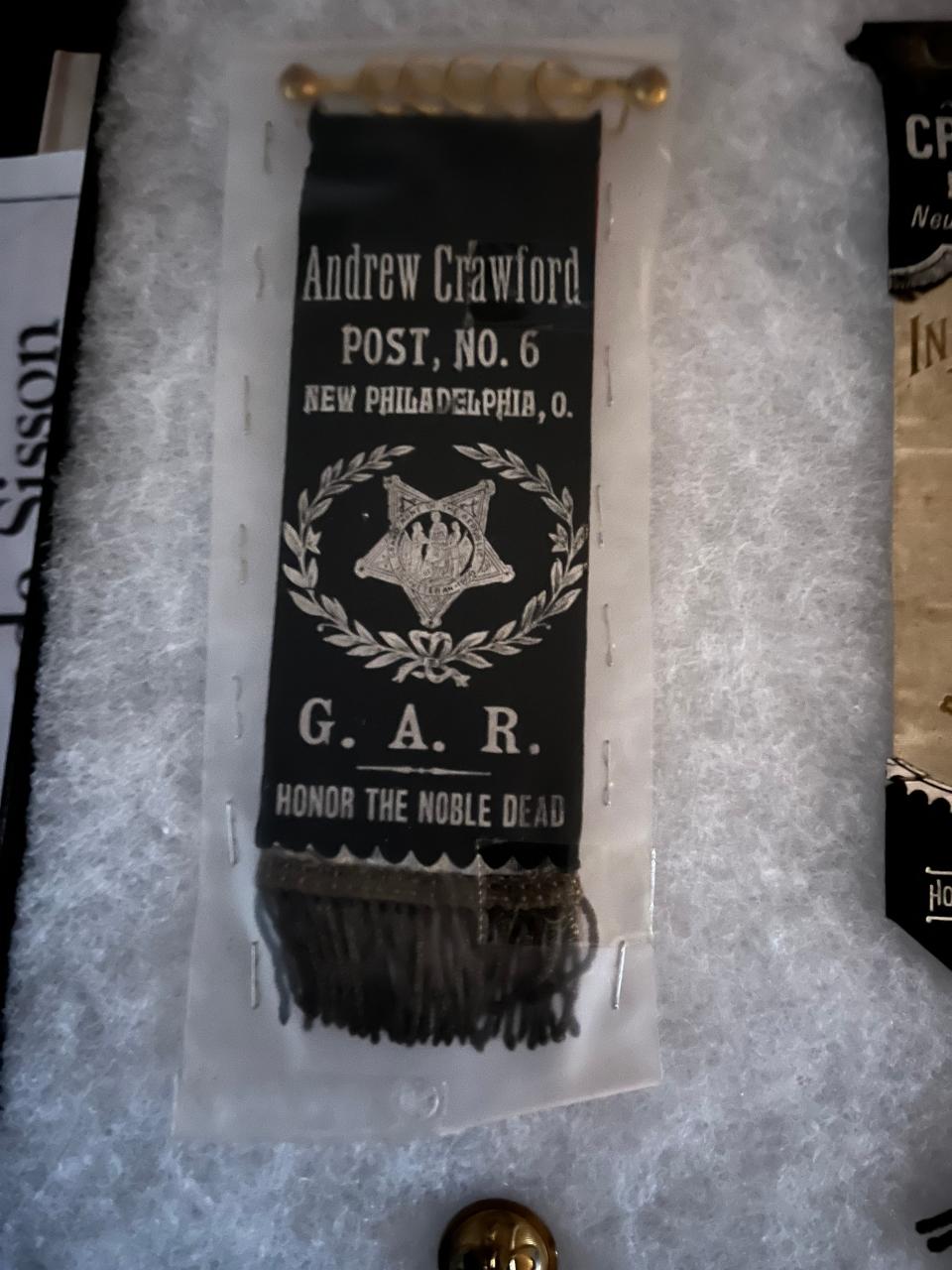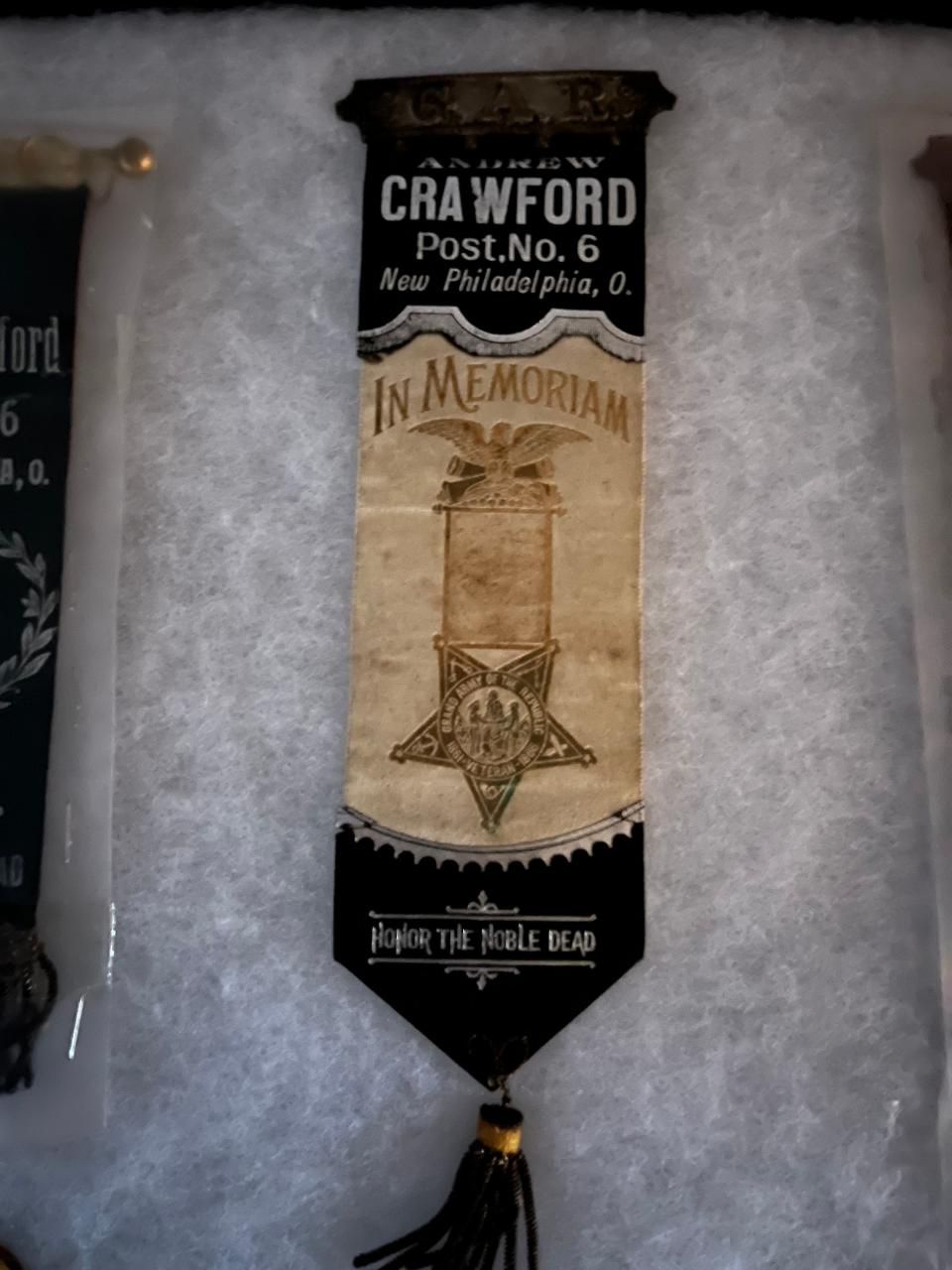Hooked on History: GAR represented interests of Civil War veterans locally and nationally

The Grand Army of the Republic (GAR), a social organization for veterans of the Union Army in the Civil War, was once a politically influential organization in the United States.
At its peak, the GAR had more than 400,000 members nationwide. According to the Ohio History Connection, five U.S. presidents were members of the organization. During the late 19th century, the Republican Party refused to run a candidate without the GAR's endorsement.
The group also helped to make Memorial Day (formerly known as Decoration Day) into a national holiday.
Locally, the organization had 11 posts in various communities around Tuscarawas County. In 1908, about 350 area Civil War veterans belonged to the GAR.

New Philadelphia had the distinction of having the first GAR post chartered in Tuscarawas County, as well as the state of Ohio. It was organized Sept. 7, 1866, just months after the GAR was founded in Illinois. Charter members of the local post included William A. Pittenger, editor of the Dennison Daily Paragraph, and James E. Graham, editor of the Tuscarawas Chronicle in Uhrichsville.
The post soon became inactive.
On Jan. 22, 1883, the New Philadelphia post was reorganized as the Andrew Crawford Post No. 6. The group had 24 charter members.
It was named for Capt. Andrew Crawford, commander of Company A of the 14th Ohio Volunteer Infantry during the Civil War. A West Virginia native, Crawford grew up in New Philadelphia. He was an attorney living in Napoleon, Ohio, when the war began.
Early in the morning of June 13, 1861, he was walking his picket line to make sure all of his men were alert. He surprised one of his sentinels, who accidentally shot Crawford. Crawford threw up his hands, exclaimed, "My God, I am shot — murdered, murdered!" and fell over dead.
He was buried in Fair Avenue Cemetery in New Philadelphia on June 18, 1861. Although Crawford didn't enlist in Tuscarawas County, he was considered the first person from the county to die in the conflict.
Other posts in the county included Ricksecker Post 469 in Dover; Welch Post 422 in Uhrichsville; Neighbor Post 494 in Newcomerstown; Fort Laurens Post 648 in Bolivar; Kaldenbaugh Post 676 in Mineral City; Alexander Post 474 in New Cumberland; Wolf Post 629 in Stone Creek; Carr Post 727 in Port Washington; Rank Post 534 in Gnadenhutten; and Bartilson Post 407 in Gilmore.
In 1908, the Welch post in Uhrichsville was the largest in the county with 116 members. The Crawford post was second with 96 members.

Women were eligible to join the Woman's Relief Corps. This organization had branches in New Philadelphia, Dover, Uhrichsville and Gnadenhutten, affiliated with GAR posts in those communities. It had more than 130 members in the county in 1908.
"Beside their purpose of organized benevolence for the Defenders of the Flag, the Woman's Relief Corps aims to aid in the sacred duties of patriotic instruction," the 1908 Atlas of Tuscarawas County said.
Men who didn't serve in the Union Army during the war could join the Sons of Veterans (now known as the Sons of Union Veterans). The organization had four posts in Tuscarawas County in 1908 — New Philadelphia, Strasburg, Gnadenhutten and Uhrichsville. They had about 150 members at that time.
As the decades passed, the number of living Civil War veterans in the county began to dwindle.
In 1920, the Ricksecker Post in Dover was in charge of its last Memorial Day services at Maple Grove Cemetery.
"The beautiful weather, together with the fact that in future years the exercises will be in charge of the American Legion and the Sons of Veterans, was responsible for the ceremonies Sunday being the best ever held in the history of the Ricksecker post, only twenty-four members of which remain," the Ohio Democrat and Times of New Philadelphia reported.
Introductory remarks that day were made by John Sisson, commander of the Ricksecker post.
Sisson, a native of England, came to Dover in 1855 at age 6.
He made two attempts to join the Union Army. He was bound out to a man in Wilmot, but Sisson and John Robinson ran off to Dover, slept in haymows and finally made it to Camp Meigs, a recruiting station at the Tuscarawas County Fairgrounds. Sisson was rejected because of his age.
As punishment, his guardian sent Sisson to live at the Tuscarawas County Infirmary (later the county home) for a year. Through the efforts of the infirmary director, Sisson was released. He made his way to Newark, where he joined the 51st Ohio Volunteer Infantry at age 15. He participated in 50 or 60 battles before returning to Dover at the end of the war.
In 1924, William F. Crites, Dover's second oldest Civil War survivor and quartermaster of the Ricksecker post, was interviewed by the Dover Daily Reporter. He estimated that there were but 30 or 35 veterans of the war still living in the area.
Crites was a member of the 80th Ohio Volunteer Infantry. He served in the Army for three years and three months but was never wounded. However, in 1862 he nearly died of typhoid fever. He spent six weeks in the regimental hospital and was then given a 30-day furlough to come home.
When he became sick, he weighed 185 pounds. When he reached home, he had dropped to 118 pounds. It was three months before he was able to rejoin his regiment.
Crites, a carpenter who was foreman in the building of the 1915 wing of Dover High School, died in 1925 at age 87.
By 1933, John Sisson was the last living member of the Ricksecker post. Four members of the post had died within the past year.
"Despite the fact that he perhaps will be the only veteran of the Civil War to occupy the place of honor accorded to survivors of that conflict on the speakers' platform in Maple Grove Cemetery in Dover on Decoration Day, Mr. Sisson is not cast down by his lot," the New Philadelphia Daily Times reported. "He expects to attend the exercises next Decoration Day in the city to which he came as a child."
He died Feb. 6, 1937, at age 88.
According to the Ohio History Connection, the GAR continued to operate until 1956, when the final member died at age 109. The last national encampment had occurred seven years earlier in 1949.
Jon Baker is a reporter for The Times-Reporter and can be reached at jon.baker@timesreporter.com.
This article originally appeared on The Times-Reporter: GAR represented interests of Civil War veterans locally and nationally

